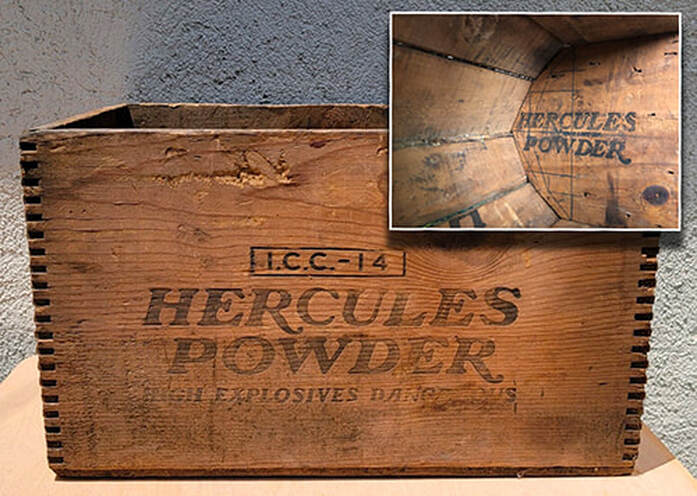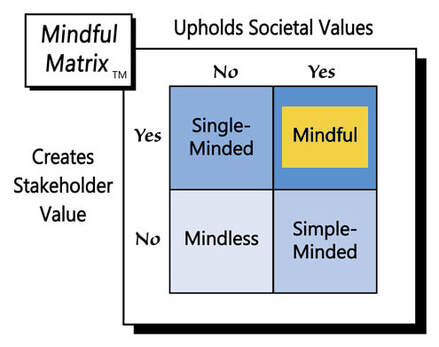author of Honorable Influence - founder of Mindful Marketing
I could tell she wanted an explanation, which I was happy to give: The story behind the formidably labeled wood has personal meaning and is also a classic example of what has increasingly become a very positively impactful business model – upcycling.
Sometime around 1940, my grandparents gave my mother, their only child, a very special Christmas gift: a Lionel locomotive, a tender car, and three pullman cars. Barely beyond the Great Depression, the O-gauge model train was likely a very significant purchase for a coal miner and homemaker. However, the gift involved much more than the train.
My grandfather, who had good carpentry skills, meticulously constructed a miniature neighborhood for the train that consisted of several small outbuildings and two larger houses. He lettered one roof with “A Merry Christmas” and the other with “A Happy New Year.”
Each home had a front porch with posts, a door, and several windows, for which he made coverings from different colored tissue paper. He placed a small light fixture inside the homes so that when plugged in, a warm glow shone through their windows.
He painted every building dark green and trimmed them with ivory, as he did the large 4’ x 8’ plywood base on which everything rested. That’s the reason I was in Lowe’s – to buy paint to touch up the platform and some of the 80-year-old buildings that I was working to restore.
My grandparents were not people of means, and building materials were likely in short supply at the time, so my grandfather used materials that were available to make the holiday train display. Inside one of the houses was cardboard from a very old sugar box (Franklin Sugar Refining Company, Philadelphia, PA) that he used to line the windows’ edges so the tissue paper wouldn’t easily tear.
The wood for the buildings came from crates that he carried home from his work in the coal mines. The reason for the "DANGEROUS" labeling is that the cartons originally contained what was commonly used for coal mine blasting – dynamite – manufactured by the no longer-existent Hercules Powder Company.
It’s amazing to think how my grandfather repurposed the discarded packing from one of the world’s most destructive forces to create something beautiful that continues to bring others happiness 80 years later.
His labor of love, turning blasting powder crates into holiday buildings, is one of the best examples of upcycling I’ve seen. In an age of cheap material inputs and mass production, the possibility of upcycling receives little thought from most. Fortunately, though, some organizations are taking it seriously.
What exactly is upcycling and why does it matter?
Merriam Webster defines upcycling as recycling something “in such a way that the resulting product is of a higher value than the original item,” thereby creating “an object of greater value from a discarded object of lesser value.”
The main benefit of upcycling, or “creative reuse,” is intuitive: Items that may have otherwise ended up in a landfill, gain new useful life, thus both reducing waste and the need to expend the resources to produce as many new products.
Through its eco-friendly approach, upcycling can help mitigate sobering statistics like these:
- “Americans generate an average of nearly five pounds of trash per person per day, totaling 292.4 million tons—half of which ends up in landfills.”
- “Apparel was responsible for some 2.1 billion metric tons of greenhouse gas (GHG) emissions in 2018—about as much as France, Germany, and the United Kingdom combined.”
- “The average U.S. consumer throws away 81.5 lbs. of clothes a year.”
- “In America alone, an estimated 11.3 million tons of textile waste – equivalent to 85% of all textiles – end up in landfills on a yearly basis.”
Given its inordinate contribution to global waste, it’s fitting that many fashion industry firms have become leaders in upcycling, which British Vogue has called “the biggest trend in fashion.” A few of the brands spearheading the movement are Outerknown, Re/Done, Zero Waste Daniel, Urban Outfitters, Beyond Retro, and Fanfare.
Support for upcycling’s effectiveness in reducing waste also comes from empirical research. Experiments in one study found that between 50% and 80% of used garments could be upcycled into new ones.
While the fashion industry may be leading the charge, it’s far from the only sector driving the upcycling movement. A few other company examples include:
- Sword & Plough creates wallets, bags, and jewelry from surplus military materials.
- Hipcycle designs jewelry and home décor, among other products, from upcycled items.
- Preserve makes kitchenware and toothbrushes from recycled goods.
- Upp! UpCycling Plastic uses plastic waste to make new recyclable plastic products.
- Looptworks creates limited edition travel-oriented apparel and bags from materials rescued from other vendors.
As people anticipate a new year, the saying, ‘Out with the old, in with the new’ is sometimes spoken. Change is often good, but constant new products can come with high economic and environmental costs.
Companies that upcycle help control those costs for themselves and others. Their good stewardship could coin a new saying: ‘Remake the old, relish the better.’
The term upcycling didn’t exist when my grandfather turned dynamite boxes into holiday houses for a model train set; however, companies today that follow his example can also create happiness for years to come as they practice “Mindful Marketing.”
Learn more about the Mindful Matrix.
Check out Mindful Marketing Ads and Vote your Mind!





 RSS Feed
RSS Feed